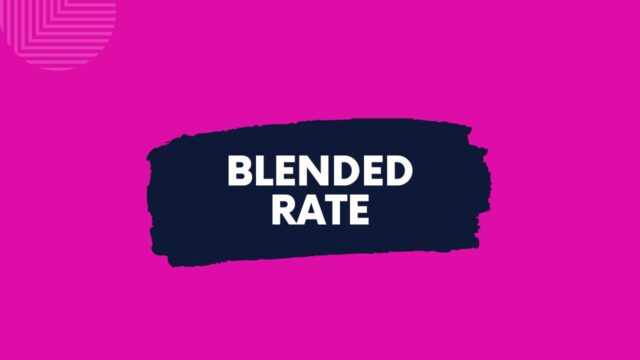
What is a blended rate and why should you care
A blended rate is a pricing strategy that combines the best aspects of fixed and variable pricing. With a blended rate, businesses can take advantage of the predictability of a fixed rate while also benefiting from the flexibility of a variable rate. This type of pricing can be especially beneficial for businesses that have fluctuating costs or customer demand.
When demand is high, businesses can charge a higher price and still stay competitive. And when demand is low, businesses can lower their prices without sacrificing profitability. In addition, blended rates can help businesses to manage risk by hedging against price fluctuations. By carefully monitoring costs and customer demand, businesses can use blended rates to maximize profits and keep prices stable.
How do you calculate a blended rate
To calculate a blended rate, you will first need to identify the individual rates for each period. For example, if you are looking at a three-year period, you will need to find the rate of return for each year. Once you have the individual rates, you can add them together and divide by the number of periods to get the blended rate. As you can see, calculating a blended rate is relatively simple and can be a helpful way to get a more accurate picture of your investment performance.
What are some of the benefits of using a blended rate
This can be beneficial for companies because it allows them to offer a lower overall price while still being able to cover their costs. It can also help to encourage customers to use more of the product or service, as they will only pay the variable portion of the price for additional usage. In some cases, a blended rate can also help to protect against price fluctuations. For example, if the cost of raw materials fluctuates, the company can still maintain its profit margin by charging a higher fixed price.
How can you get the most out of your blended rate
A blended rate is a mix of fixed and variable charges for a product or service. The advantage of a blended rate is that it can save you money on your overall bill. However, there are a few things to keep in mind in order to get the most out of your blended rate. First, be aware of how much each type of charge makes up the total rate. Second, ask whether the fixed or variable portion of the rate is subject to change and how often. Finally, make sure you understand any minimum purchase requirements or other conditions that may apply to the rates. By keeping these things in mind, you can be sure to get the most out of your blended rate.
What are some of the drawbacks of using a blended rate
There are also some potential drawbacks to using a blended rate. First, it can be difficult to calculate the correct mix of fixed and variable costs. If the wrong mix is used, the company could end up overcharging or undercharging for their products and services. Additionally, blended rates can also be confusing for customers, which could lead to confusion and frustration. Finally, blended rates can sometimes create an incentive for companies to increase their costs, which would offset any benefits that the customer might receive from the lower prices. As with any pricing strategy, there are pros and cons to using a blended rate. Companies should carefully consider all of the factors involved before deciding whether or not this type of pricing is right for them.
What are some other things to keep in mind when using a blended rate
In addition to the factors mentioned above, there are a few other things to keep in mind when using a blended rate. First, it is important to make sure that all of the materials you are using are compatible with each other. Mixing incompatible substances can cause problems with the final product, so it is always best to err on the side of caution. Second, it is important to be aware of the shelf life of the blended product. In most cases, the shelf life will be shorter than that of the individual ingredients.
Finally, it is also important to remember that blending does not always produce a uniform mixture. As a result, some variation should be expected. Despite these considerations, blending can be an effective way to save money on chemical costs.


































